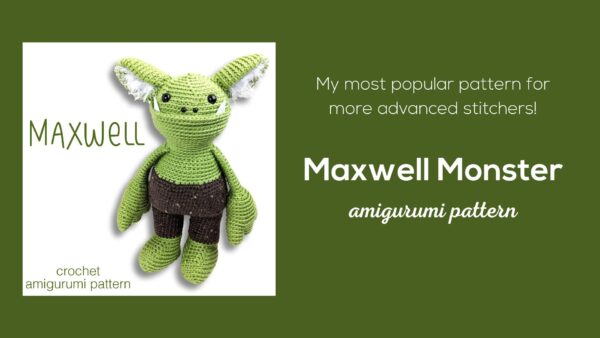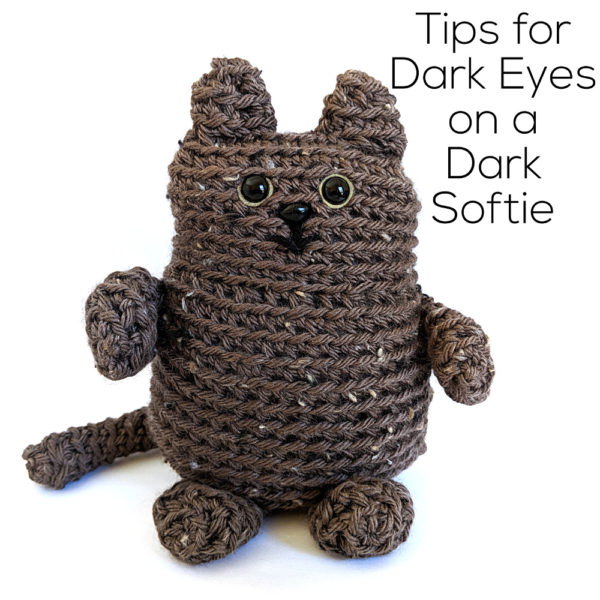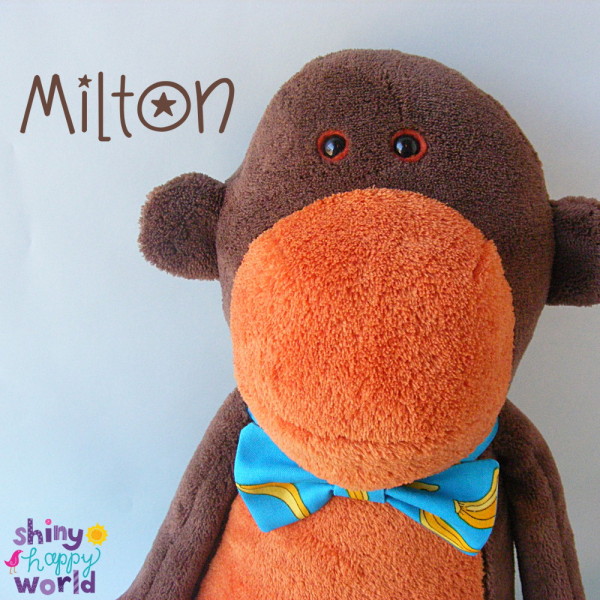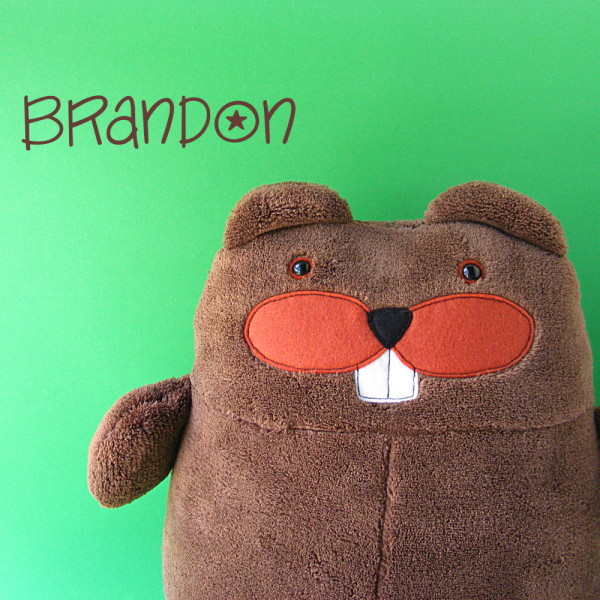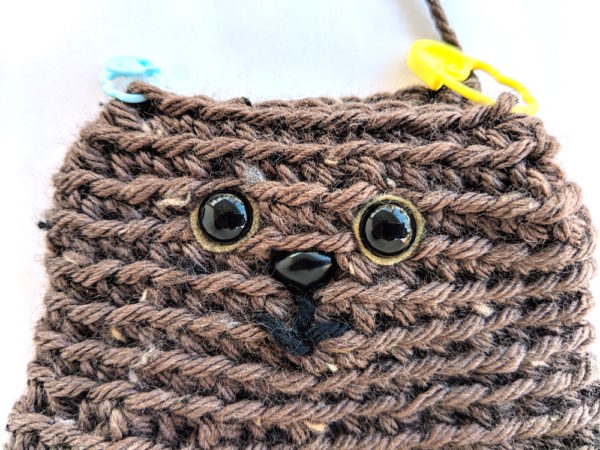Felix is a new crochet pattern and I love him. 🙂
For the pattern I stitched him up in yellow, because lighter (and solid) colors make it easier to see the individual stitches. But I also wanted to make him in this tweedy dark brown for more of a tortoiseshell cat look – just for fun.
The tricky part of using dark yarn – or dark fabric for a sewn softie – is getting the eyes to show up well. The eyes are the most important part of the face!
I’ve got two solutions for you today.
If you want to use a solid black craft eye (which is what I use for most of my softies) then it’s a big help to back those eyes with a circle of a lighter colored felt just a smidge bigger than the eye. That’s what I did with Milton Monkey. . .
. . . and with Brandon Beaver. . .
And that’s what I did with Felix. Here you can see those eyes a little closer.
I used a 1/2″ circle of sandstone felt with 9 mm eyes.
I use this tool to trace nice neat circles in lots of sizes.
I don’t remember where I got this exact template, but I’ve seen similar items at Office Max and Staples.
If you make a lot of softies and tend to use the same size eyes, you can also buy die-cut eyes which are perfectly perfect circles. I like the ones from Woolhearts on Etsy. You can choose the size and an assortment of up to six colors. It’s handy to keep a little stash of favorite colors.
Once you have the circles cut, there’s one more step. You need to punch a hole in the middle for the shank of the eye to go through! You can use an awl, or you can use a 1/8 inch hole punch for extra neat holes.
Perfect little backs to set off your eyes! I usually stick to a color that’s a lighter shade than the main color – but not too light! White in particular can make your softie look scared.
Another option is to use an eye with color already in it.
(When I do that I usually use a slightly larger eye than what the pattern calls for – like jumping from a 9 mm to a 12 mm eye.)
Look at Sharon’s cat (named Arnold). She also made a dark brown kitty, but she used awesome cat eyes for hers!
With those big eyes and no mouth he immediately reminded me of the cat from Kiki’s Delivery Service.
And now I need to make a black cat. 🙂

Here are handy links to all the posts about amigurumi eyes. . .
- What Kind of Eyes Should I Use?
- How to Use Safety Eyes
- Tips for Dark Eyes on a Dark Softie
- How to Make Glitter Eyes
- Attaching Craft Eyes through Thick Layers
- How to Remove Safety Eyes
- How to Add Felt Eyes to Your Softie
Return to the main table of contents for Let’s Learn to Crochet Amigurumi.
Move on to the lessons for standing legs.
Happy stitching!

